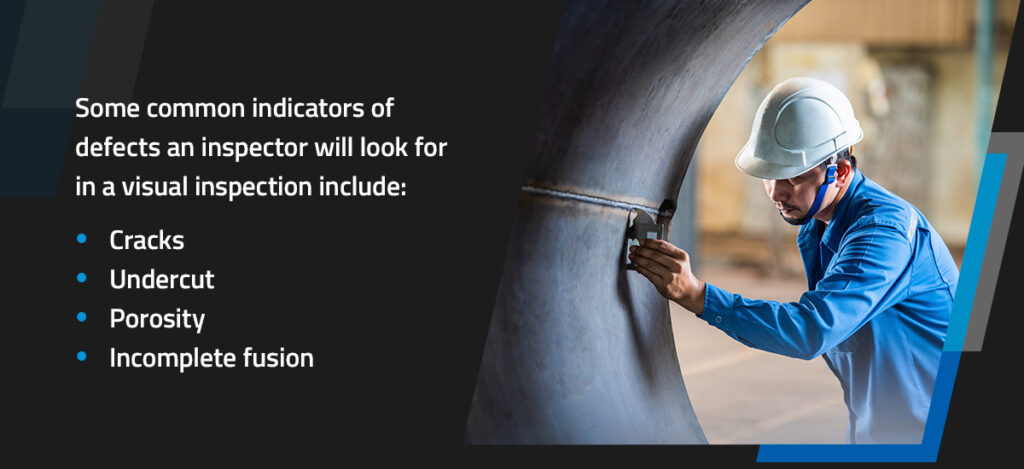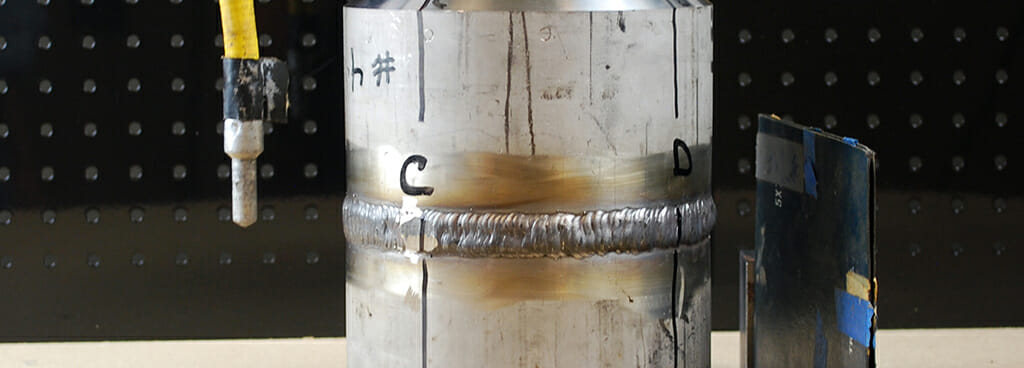The Ultimate Overview to Welding Inspection Racine for Industrial Criteria
Wiki Article
Cutting-edge Strategies to Fillet Weld Evaluation and Screening: Enhancing Weld Quality and Conformity Criteria
In the world of welding, the top quality and integrity of fillet welds play an essential role in making certain the architectural stability and reliability of different industrial parts. With the continuous drive for enhanced effectiveness and compliance with stringent requirements, the exploration of innovative techniques to fillet weld assessment and screening has ended up being critical. As markets evolve, the standard approaches may no longer be sufficient in meeting the demands of modern welding applications. By welcoming advanced innovations and techniques, a new horizon of opportunities arises in the world of weld top quality analysis and adherence to conformity criteria.Advanced Non-Destructive Testing Techniques
Using cutting edge innovations, advanced non-destructive screening methods play an important duty in ensuring the integrity and high quality of fillet welds. These approaches, such as phased range ultrasonic screening (PAUT) and magnetic particle testing (MPT), deal comprehensive insights right into the weld's inner framework without triggering any kind of damages to the material. PAUT, as an example, utilizes several ultrasonic aspects to examine the weld from different angles, offering a comprehensive visualization of prospective problems like absence of blend or splits.Likewise, MPT is effective in finding surface-breaking issues by using an electromagnetic field and iron bits to the weld location. This approach is especially beneficial for determining discontinuities that may endanger the weld's toughness. By utilizing these sophisticated non-destructive testing methods, weld examiners can precisely examine the high quality of fillet welds, ensuring compliance with industry standards and policies. The ability to spot defects early not just improves weld high quality however likewise stops expensive rework or failures in structural honesty, underscoring the value of these cutting-edge testing methods in welding evaluations.
Robotics and Automation in Assessment
The integration of robotics and automation has changed the evaluation procedure for fillet welds, improving efficiency and precision in quality evaluation. Robotics offer exact control and repeatability in examining welds, ensuring regular and reputable outcomes. Automated systems can be configured to adhere to particular examination paths, ensuring complete coverage of welds and minimizing the risk of human error.Robot inspection systems geared up with innovative sensing units can discover and gauge weld features with high accuracy, providing comprehensive information for evaluation. These systems can identify problems such as splits, absence of fusion, and porosity, allowing punctual corrective actions to be taken. Furthermore, robotics and automation permit real-time data collection and analysis, supplying prompt responses to drivers and helping with fast decision-making procedures.
Furthermore, making use of robotics and automation in fillet weld assessment enhances total performance by lowering inspection times and enhancing evaluation throughput. By enhancing the inspection process, producers can guarantee weld high quality and compliance standards are met efficiently, eventually resulting in cost savings and improved product high quality.
Utilizing Artificial Intelligence for Analysis
Fabricated knowledge plays a crucial role in improving the efficiency and precision of analysis in fillet weld inspection processes. AI algorithms can rapidly refine large amounts of information from weld evaluations, detecting flaws or inconsistencies that may be testing to determine with the nude eye - Welding Inspection Racine.In addition, AI systems can gain from previous examination data, continuously boosting their capacity Discover More Here to identify prospective flaws and inconsistencies in fillet welds. This adaptive knowing capacity improves the general quality assurance procedure, decreasing the likelihood of human error and making sure that welds fulfill the called for criteria. By incorporating expert system into fillet weld analysis, industries can achieve greater degrees of performance, consistency, and conformity in their inspection practices.
Portable Tools for On-Site Inspection
 Enhancing field assessment performance, the fostering of mobile my review here devices changes on-site assessment procedures for fillet welds. These devices offer flexibility and convenience, allowing inspectors to conduct comprehensive assessments in different places, including difficult or remote environments. Portable devices such as ultrasonic screening tools, magnetic bit assessment tools, and electronic radiography systems supply real-time information and high-resolution imaging abilities, allowing quick decision-making and immediate responses on weld top quality.
Enhancing field assessment performance, the fostering of mobile my review here devices changes on-site assessment procedures for fillet welds. These devices offer flexibility and convenience, allowing inspectors to conduct comprehensive assessments in different places, including difficult or remote environments. Portable devices such as ultrasonic screening tools, magnetic bit assessment tools, and electronic radiography systems supply real-time information and high-resolution imaging abilities, allowing quick decision-making and immediate responses on weld top quality.One considerable advantage of portable devices is their capacity to improve assessment procedures, reducing downtime and boosting total performance. Examiners can easily transport these devices to different job websites, eliminating the demand for moving hefty machinery or parts to off-site centers. Additionally, the transportability of these devices promotes cost-effectiveness by decreasing transport expenses and increasing assessment timelines.
Additionally, the use of mobile tools for on-site inspection advertises proactive top quality control steps, as assessors can quickly identify and attend to any prospective welding problems or disparities. By integrating these cutting-edge technologies right into on-site inspection techniques, welding professionals can make sure conformity with market criteria and enhance weld high quality, ultimately causing boosted structural stability and safety and security in different welding applications.
Assimilation of Data Administration Equipment
Having enhanced on-site assessment procedures through the usage of portable devices, the next stage involves the seamless assimilation of data management systems to additionally boost performance and data analysis capabilities in fillet weld inspection and screening. Welding Inspection Racine. By incorporating data management systems right into the evaluation procedure, companies can improve information collection, storage space, and evaluation. This combination enables real-time surveillance of weld high quality, prompt recognition of flaws, and timely decision-making to rectify any type of problems that might arise throughout the examination process
The assimilation of data monitoring systems makes it possible for seamless interaction in between different stakeholders entailed in the evaluation procedure, cultivating partnership and boosting overall high quality control actions. Eventually, the assimilation of data administration systems offers to elevate the requirements of fillet weld examination and testing, making sure conformity with industry guidelines and boosting weld quality.
Final Thought
To conclude, innovative methods to fillet weld weblink examination and screening have actually significantly improved weld high quality and conformity criteria. Advanced non-destructive testing methods, robotics, automation, man-made knowledge, mobile devices, and information management systems have transformed the means weld inspections are conducted. By using these innovations, markets can make sure that welds fulfill the called for top quality criteria and regulations, ultimately improving overall efficiency and safety in welding procedures.
By employing these advanced non-destructive screening strategies, weld assessors can precisely examine the high quality of fillet welds, guaranteeing compliance with industry criteria and laws. Mobile devices such as ultrasonic screening gadgets, magnetic fragment examination tools, and electronic radiography systems give real-time data and high-resolution imaging capabilities, enabling fast decision-making and instant comments on weld quality.
Having maximized on-site assessment processes via the application of portable tools, the following phase involves the smooth combination of information administration systems to additionally boost effectiveness and information analysis capacities in fillet weld examination and screening (Welding Inspection Racine). Ultimately, the integration of information management systems offers to raise the standards of fillet weld assessment and screening, making certain conformity with market guidelines and boosting weld quality
 In final thought, innovative strategies to fillet weld assessment and testing have actually considerably boosted weld top quality and compliance criteria.
In final thought, innovative strategies to fillet weld assessment and testing have actually considerably boosted weld top quality and compliance criteria.Report this wiki page